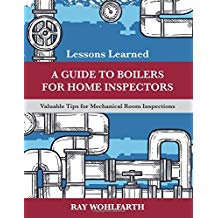
|
If you needed a tool that would best describe an HVAC technician or his company, it would be his manifold and gauges. Other than hand tools, that’s the one most technicians carry.
So, it would be unusual to think of a tech going on a “preventive maintenance” or “tune-up” call without connecting this device. Yet, I suggest this only should be connected to a system as a last option. Why?
Throughout the day, the gauges, hoses and manifold we think of as a single tool are connected to all sorts of systems that are contaminated with moisture, dirt, soot and acids that you wouldn’t want introduced into a clean system. Also, one of the most common callbacks after such a call is a refrigerant leak that resulted from making a connection.
Few know this fact: Most technicians have only a vague idea of what they are reading with their gauges! Most say they are reading pressures, but that doesn’t really mean anything unless there is something drastically wrong. Pressure readings are nothing other than a rule-of-thumb guide, unless they use them to calculate compression ratios (actual compressor work). I’ve never seen an equipment manufacturer publish a guide of suggested compression ratios.
Rather, what they should be reading is the condenser and evaporator saturation temperatures, which provide a far more accurate description of how well a system operates. These can be noninvasively read with an accurate digital thermometer, along with the superheat and subcooling temperatures, which are a better indication of the proper charge.
The other problem inherent to hooking up the gauges is the temptation to add extra refrigerant and overcharge the system, which reduces capacity, efficiency and compressor life. My experience is that most residential systems are badly overcharged due to this practice.
But how would a technician know if there was air in a system if he/she doesn’t hook up their manifold? My suggestion to them is to purchase an electronic sight glass (an electronic tool), since it can detect the presence of air bubbles (or non-condensed liquid refrigerant) in a liquid line and the presence of liquid droplets in a suction line (floodback). These are things that simply cannot be determined by pressure gauges!
Several years ago, I put on a training program about this for the service technicians of a local large commercial HVACR service company. And after I had completed the course, the service manager stood up and proclaimed, “If I ever hear that one of you failed to hook up your gauges on a PM call, I will fire you!” Shame on him for saying that.
Touching the probe of a good and accurate electronic thermometer to a (condenser or evaporator) coil’s center will provide a far more accurate saturation reading than pressure gauges. These readings then can be compared to the subcooling refrigerant temperature leaving the condenser and the superheat temperature leaving the evaporator to more accurately determine if there is a low or overcharge level regardless of refrigerant type.
Have you ever hooked a manifold to one of these high-pressure R410A systems? I have, and it’s scary. You usually lose a considerable amount of refrigerant in the process, so who knows if the charge is right?
The point here is that a preventive maintenance call should do more good than harm. And there should never be callbacks due to problems the technician created. This is why it is best to check out a system as noninvasively as possible.





